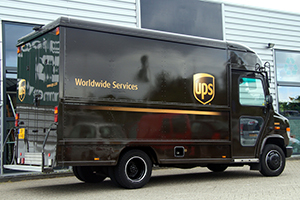Delivery Robot
 One of the biggest logistical problems of home delivery is what’s known as the “last mile” – getting goods such as groceries, prescriptions and small packages to the buyer’s door. Deploying vans which stop every few minutes so the driver can disembark, knock on the door, and wait for an answer is time-consuming and inefficient, which is why companies like Amazon and Google have been looking at drones to accomplish the task. But the co-founders of Skype are taking a more practical, ground-based approach.
One of the biggest logistical problems of home delivery is what’s known as the “last mile” – getting goods such as groceries, prescriptions and small packages to the buyer’s door. Deploying vans which stop every few minutes so the driver can disembark, knock on the door, and wait for an answer is time-consuming and inefficient, which is why companies like Amazon and Google have been looking at drones to accomplish the task. But the co-founders of Skype are taking a more practical, ground-based approach.
A distant descendent of Shakey – the first autonomous robot funded by the Pentagon as a sentry for military bases – the new delivery vehicle looks a bit like an oversized cooler on wheels. With a carrying capacity of 40 pounds, it’s designed to be loaded at a compact warehouse (the developers envision this being a converted cargo container that can be placed in a parking lot) and then navigate its way to its destination using city sidewalks. Customers will use a smartphone app to retrieve their packages. It’s even possible to examine their purchase while the robot waits, and return items immediately if they decide not to keep them. The developers estimate that deliveries can be made for as little as $1.00.
The autonomous vehicle will travel at a top speed of four miles an hour, has a range of up to two miles, and is powered by an electric motor that consumes only 50 watts of power. Although it has cameras and radar, it doesn’t require expensive, high resolution sensors like Lidar, so it’s less costly to build than a drone. An LED-lit flag makes it easy to spot by pedestrians and drivers. It will also be able to communicate with any humans it encounters through built-in speakers and microphones, and can call on a remote human operator if it encounters a navigation puzzle that it can’t solve – such as crossing a busy intersection. Theft is a concern, but a minor one, thanks to high resolution video and GPS tracking sensors that would need to be disabled – and then, what’s the point?
There are a few regulatory obstacles to be overcome, as some municipalities do not allow motorized vehicles to travel on sidewalks. But other transportation mediums (such as Segway) have successfully negotiated similar exemptions in many areas.
For information: Starship Technologies, Teaduspargi 8, Mehhatroonikum, 12618 Tallinn, Estonia; Web site: https://www.starship.xyz/